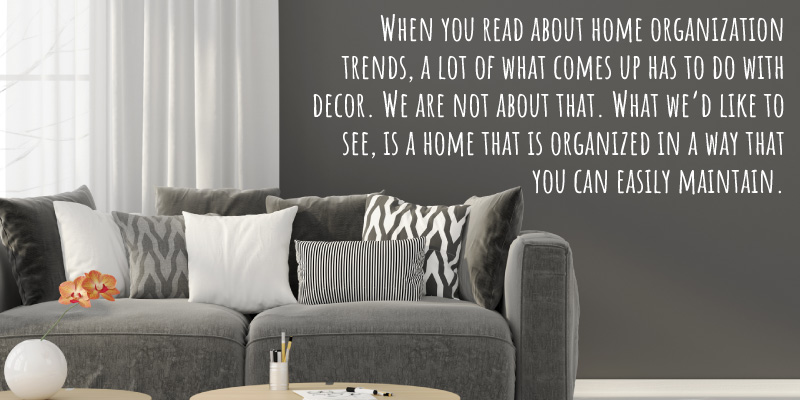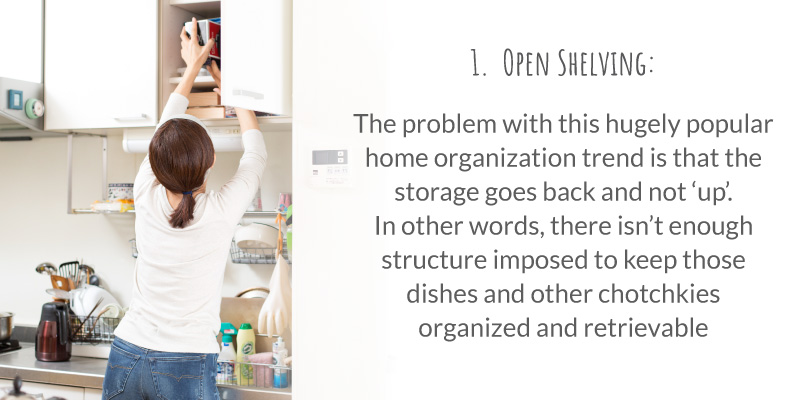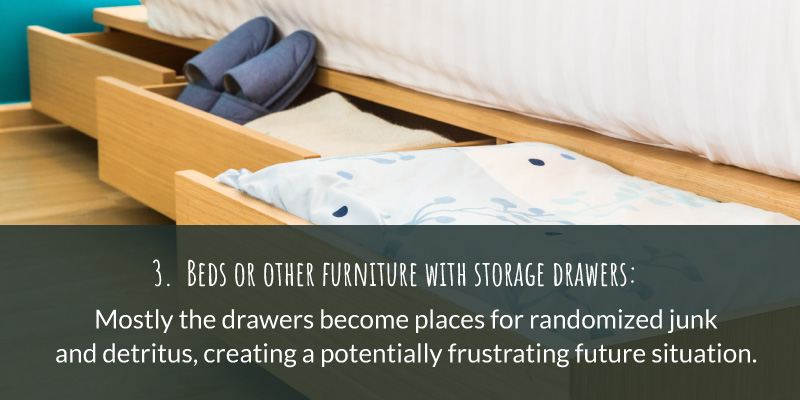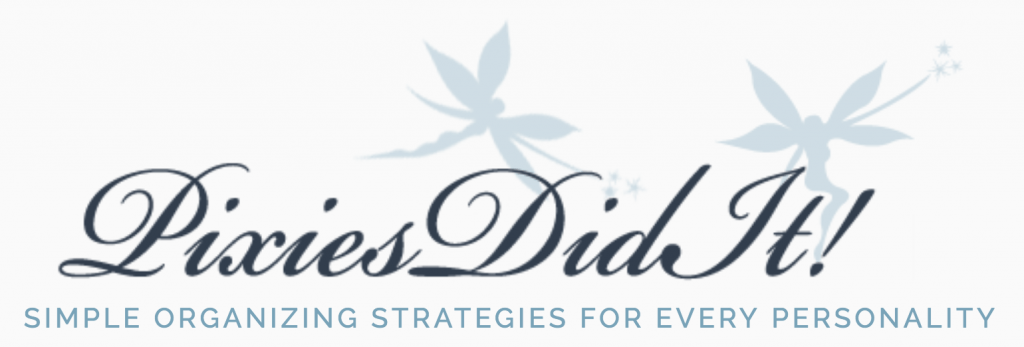Three Home Organization Trends that Don’t Work
We’ve spent a lot of time sharing our ideas on how to best organize your home according to your personality (Pixie combined with Myers Briggs) type — how and when to declutter (Later Boxes or donating), which products to best help you organize according to your habits, strengths and weaknesses, etc. What we haven’t done is to really go over the home organization trends that don’t work. That, as good as they look in magazines, will simply fail when it comes to actually helping you function effectively in your home.

When you read about home organization trends, a lot of what comes up has to do with decor. We are not about that — interior decorators are. What we’d like to see, for each and every one of you, is a home that is organized in a way that you — no matter which type you are — can easily maintain. The suggestions we make are yours to take or leave, of course. But know that there is a method to our madness. If you haven’t taken our Pixie Quiz yet, it’s on our website, and the first step toward achieving optimal and effective home organization. This quiz, and our book, Organize Your Way: Simple Strategies for Every Personality, will tell you whether you’re a piler or a stuffer, whether you have a visual memory or whether you keep everything in your head and organized, or whether you write everything down AND keep it all straight in your head, too (commonly referred to as “Type A”). It will tell you whether to own a filing cabinet, or just clear inbox containers to keep your piles in (if you have a visual memory, this is probably a tip for you). It even tells you whether to keep your dining room a formal or informal space (what personality test out there does that?).
We talk about why certain home organization trends work for certain personality types, but we don’t talk about the real duds, and why they won’t work for anyone. Here are the top three most problematic home organization trends for any personality:

Yes, we know that for all you Smarts (ENTP, INTP, ENTJ, INTJ), Funs (ESFP, ISFP, ESFJ, ISFJ) and certain Organics (ENFP, INFP), that being able to see exactly where things are is a bonus. However, the problem with this hugely popular home organization trend is that the storage goes back and not ‘up’. In other words, there isn’t enough structure imposed to keep those dishes and other chotchkies organized and retrievable (see this Pixie Principle on p. 5 of our book). Who can visualize a picture-perfect, wooden, free-standing shelf, complete with equally perfect stacks of pristine, white ceramic bowls and the occasional tiny plant? We can! But who can picture just how messy and difficult to keep organized this shelving system will eventually be? The takeaway here is that a) you need vertical dividers to keep your dishes organized, no matter if they are in an open shelf or a closed cabinet. Closed cabinets are more likely to have vertical dividers in them, and b) nothing ever stays looking just like the picture in the magazine for more than five minutes. Don’t put that pressure on yourself, particularly if you dislike visual clutter. A third point made by the Washington Post is about the state of the dishes themselves:
“The problem is, most of us don’t use display-worthy dishes every day. Often, the open shelving becomes a display space in an area that would have been the perfect place to store daily dishes. Before you add open shelving, consider how your pieces will look and whether you’re up to the task of keeping the shelves neatly arranged.”
Also, unless you have the shelves at eye level, it will be challenging to reach back for the items that sit behind the front row. Cabinets that allow for stacking, accommodate dividers, and provide more all-around support are much better.
2. Over-labeling: Again, we know we have championed label-makers and labeling in our book — for certain types only! These types are Classics (ESTP, ISTP, ESTJ, ISTJ) but only with restraint, and certain Smarts and Organics (both of whom have visual memories and need to formalize their piles. (We suggest containing them in clear inbox type containers that are labeled clearly according to contents.) However, if you go crazy with a labeler, and start getting overly specific (the way a Classic might), you’ll end up with too many containers and too many categories and too much clutter. Period.
 These are great for kids who are naturally organized (do they exist?) but mostly the drawers become places for randomized junk and detritus, creating a potentially frustrating future situation. Imagine coming across one of these drawers and finding that the carefully organized (rolled) shirts that you put in the drawer for your daughter have become crumpled and pushed aside by various dolls and action figures. These are also not great ideas for the types who tend to put clothes in drawers and forget about them (Organics, Smarts). Instead, use clear bins and stack them in large, open bookshelves.
These are great for kids who are naturally organized (do they exist?) but mostly the drawers become places for randomized junk and detritus, creating a potentially frustrating future situation. Imagine coming across one of these drawers and finding that the carefully organized (rolled) shirts that you put in the drawer for your daughter have become crumpled and pushed aside by various dolls and action figures. These are also not great ideas for the types who tend to put clothes in drawers and forget about them (Organics, Smarts). Instead, use clear bins and stack them in large, open bookshelves.
There really aren’t that many organization tips that are not helpful in some small way to someone. But it’s so important to know which organizational tactics will work for you, which is why we wrote a book all about it. Visit amazon.com and pick up a copy — you might learn something that will change your home, and maybe even your life!
